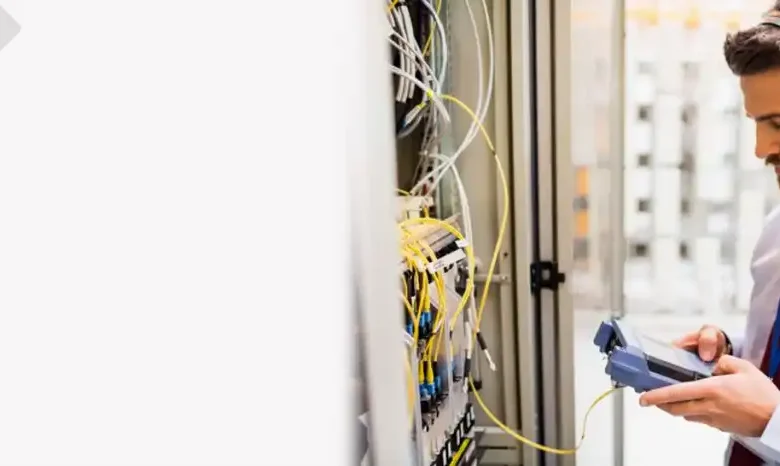Understanding the Importance of Audiometric Testing and Noise Assessment in the Workplace

The health protection of the workers and the fulfillment of regulatory standards are seriously taken into consideration, especially in industrial and high-noise work environments. Audiometric testing, in addition to comprehensive noise evaluation, has been an indispensable part of such efforts. In plain words, audiometric testing and noise assessment are the two significant components of the workplace hearing conservation program that are essential for empowering employers to monitor and mitigate the risks of noise exposure.
What is Audiometric Testing?
One type of health surveillance is the audiometric test, which measures the capacity of an individual to hear. It acts as a benchmark for healthy hearing and also helps in early detection of hearing loss. Regular tests of this nature will enable people who have begun to lose their hearing to be picked out well in advance of this becoming a problem, especially when workers are consistently exposed to high levels of noise at work. Conducted by qualified professionals, audiometric tests evaluate a person’s ability to hear sounds at different frequencies and volumes, establishing a hearing baseline and tracking any changes over time.
The Role of Noise Assessment in Hearing Conservation is a systematic procedure of measuring the intensity of noise levels and their analysis. In that regard, it enables an organization to find those areas where exposure to noise goes beyond the allowable limits, thus allowing it to undertake some protective measures against the risk of harm on the employees. A comprehensive noise assessment utilizes specialized equipment to measure the level, frequency, and duration of noise within the various areas of the workplace.
Noise assessments identify specific sources of potentially injurious noise and supply crucial data needed for risk management in conjunction with regulatory compliance. This data shall be helpful when developing a tailor-made hearing conservation program in that the venture is allowed to focus on sources that generate noise, ensuring that one can remove as much risk of damage to hearing as possible.
How Audiometric Testing and Noise Assessment Work Together
While audiometric testing focuses on assessing the hearing health of individual employees, noise assessments do the same for the environment. Together, they form a comprehensive approach to the prevention of noise-induced hearing loss. The two processes are complementary in several ways:
Baseline Data: Audiometric testing sets a baseline for each employee in terms of hearing and allows for the tracking of changes over time. A noise assessment will provide environmental baseline data to show which areas have high noise levels that may be affecting hearing health.
Ongoing Monitoring and Prevention: Regular audiometric testing helps employers to establish early signs of hearing loss, while periodic noise assessments help them find changes in the noise exposure over time. Together, they enable the proactive management of hearing risks.
Compliance with Safety Standards: In many instances, workplace safety standards necessitate both audiometric testing and noise assessment. It would be possible for organizations to prove their compliance with the regulations through such an assessment and avoid potential liabilities arising in courts of law.
Noise assessment helps the employer to locate those areas that involve high risk, hence implementing target controls, for example, sound barriers, equipment modification, or even personal protective equipment. Its regular audiometric testing confirms the efficiency of such controls by monitoring employees’ hearing health.
Why Audiometric Testing and Noise Assessment Are Important
Noise-induced hearing loss is preventable.
NIHL is of particular concern in the manufacturing, construction, and transport sectors. Audiometric testing provides employers with the opportunity to detect early signs of NIHL and therefore allows them to take appropriate precautions. If it is performed in conjunction with noise assessment, the organization is able to introduce controls to limit exposure, thereby minimizing risk to permanent loss of hearing.
Compliance with Occupational Health Regulations
In most countries, occupational health standards regulate that audiometric testing and noise assessment should be carried out on a regular basis in high-noise environments. For instance, the WHS regulations make it binding upon the employer to take an action in order to protect their employees from the risk caused by noise. It is through regular audiometric testing and noise assessment an organization is assured of meeting these requirements and thus avoid fines and penalties.
Improved Employee Health and Productivity
Prolonged exposure to high noise levels can affect not only hearing but also bring on stress, fatigue, and reduced concentration, impacting overall productivity. Regular audiometric testing and noise assessment are two real areas where employers show their commitment to the well-being of the employees. A protected and valued employee is going to be more productive and engaged.
Informed Decision-Making for Risk Management
Audiometric testing and noise assessment provide data-driven insights to support better decision-making. This is because it provides the employer with an opportunity to make informed choices in risk management and prevention of illness at work, having correct information about the level of workplace noises and the hearing health of employees. Such information aids in setting long-term health and safety goals, hence ensuring hearing conservation remains on the agenda.
Cost Savings through Reduced Turnover and Liability
By preventing occupational noise-induced hearing damage, this saves claims and litigation or the added costs of losing good people due to health issues. Audiometric testing and noise rating assessment give the organization an opportunity to act before it’s a problem, thereby saving such costs by maintaining healthy, work-sustainable manpower.
Best Practices to Apply Audiometric Testing and Noise Assessment Programs
For any business that wants to implement audiometric testing and noise assessment in an effective manner, here are best practices:
Implement the program of Hearing Conservation: Provide for audiometric testing in a comprehensive hearing conservation program that shall also involve noise reduction plans, personnel training, and periodic hearing testing.
Routine Testing and Monitoring: Undertake periodic audiometric tests and noise measurements. The ongoing monitoring picks out newly developed hazards and ensures that the noise controls already installed remain effective.
Employee Training and Awareness: Employees should be properly trained regarding the hazards of noise exposure and the purpose of the audiometric testing. Additional training in the use of PPE, such as earplugs or earmuffs, could offer extra protection. A microlearning system can be utilized to deliver these training modules in small, easily digestible segments, ensuring better retention and engagement.
Personal Protective Equipment and Noise Control: Administrative and engineering controls, including equipment modification or sound barriers, should be instituted. Personal protective equipment shall be provided for those areas with high noise levels; their proper use shall be taught to all the employees working in those areas.
Data Tracking and Analysis: Record audiometric tests and noise assessments for certain periods; analyze such information. Trend analysis provides necessary modifications toward conservative strategies on hearing. Therefore,
Conclusion
Audiometric testing and noise assessment are matters of the highest importance in protecting employees’ hearing health and therefore meeting the set workplace safety standards. These assessments, though valuable components of a company’s health and safety strategy, promote active means of prevention against noise-induced hearing loss, support the health and wellbeing of the work force, and help to build a safer working environment. Companies that pay due attention to audiometric testing and noise assessment show respect for the health of their employees, minimize their potential liabilities, and help foster productivity in a safe and compliant workplace.




